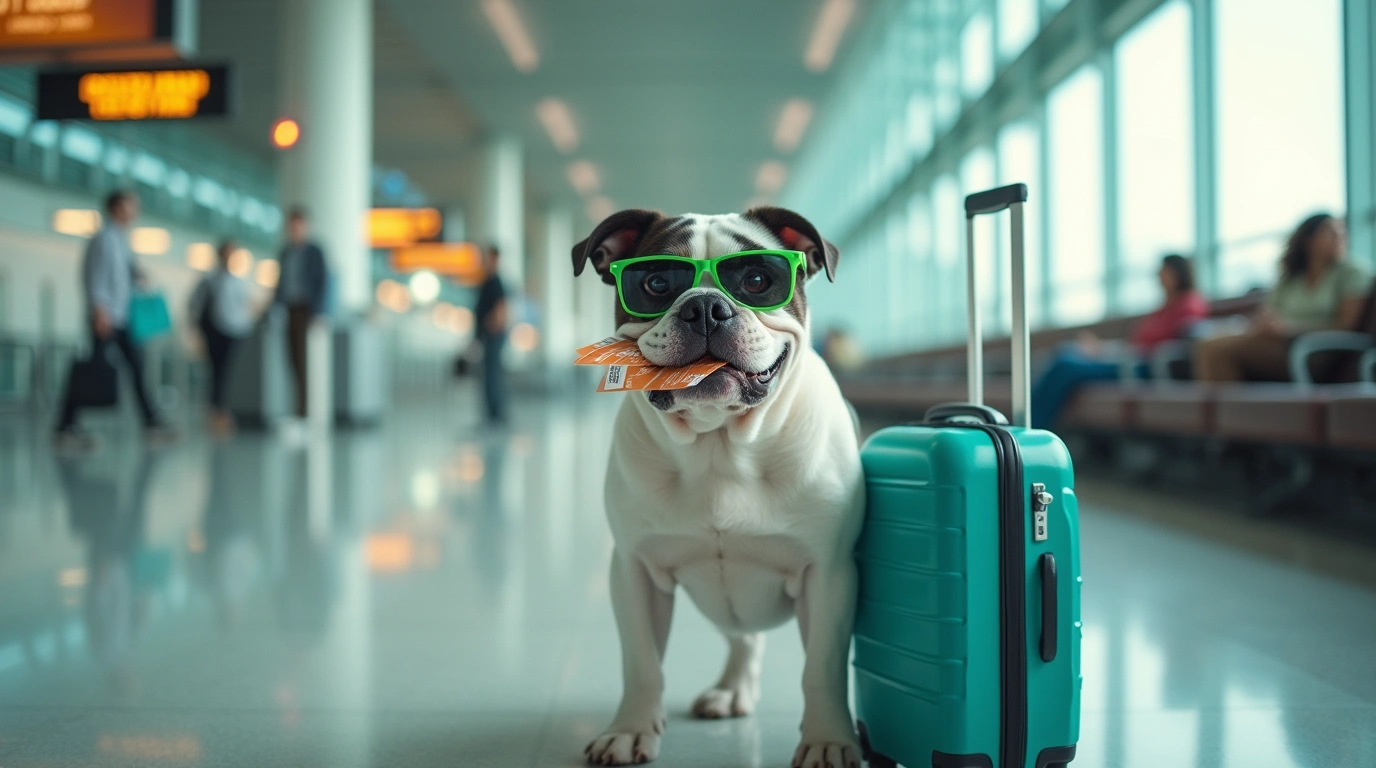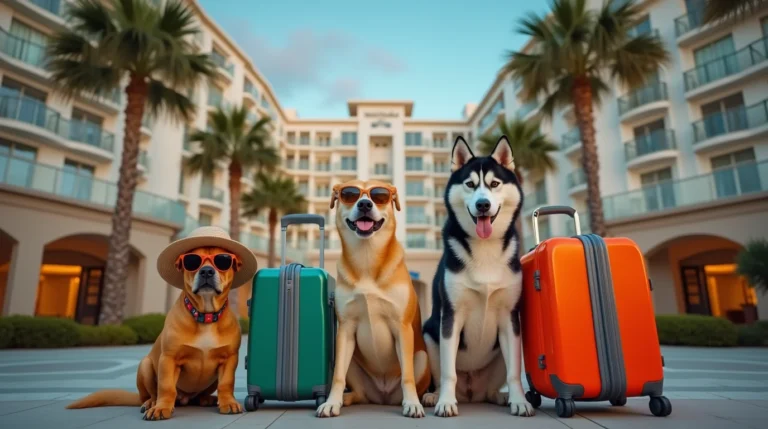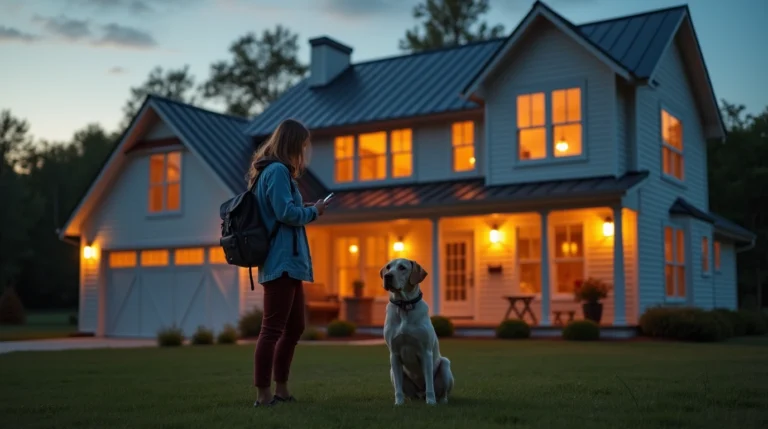Considering Southwest for pet travel? Discover 3 significant benefits of the Southwest pet fee plus 3 costs to consider before booking your furry friend’s next flight.
Table of Contents
Traveling with pets has become increasingly common as more people consider their furry companions to be integral family members rather than pets that can be left behind. For those looking to fly with their animals, understanding airline policies and associated costs is essential for a smooth journey. Southwest Airlines, known for its customer-friendly approach and competitive pricing, offers pet transportation options that many travelers find appealing. The Southwest pet fee structure stands out in the airline industry for several reasons, providing both advantages and limitations that pet owners should carefully consider. Whether you’re planning a vacation, relocating, or visiting family, bringing your pet along requires thoughtful preparation and budgeting. This comprehensive guide examines the three significant benefits of Southwest’s pet policy and fee structure, while also highlighting three important cost considerations that might impact your travel decisions. By understanding both the advantages and potential drawbacks of Southwest’s pet transportation services, you can make an informed choice about whether this airline offers the right combination of value, convenience, and pet-friendly amenities for your specific travel needs.
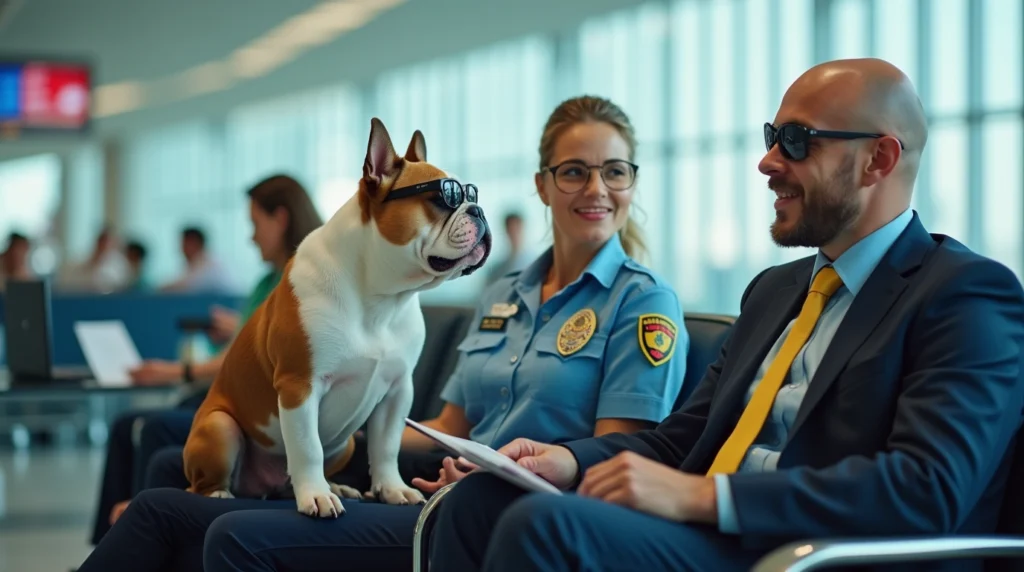
Understanding Southwest’s Pet Policy: The Basics
Overview of Southwest’s Pet Transportation Options
Before diving into the specific benefits and costs associated with the Southwest pet fee, it’s important to understand the airline’s basic pet policy. Southwest Airlines allows small vaccinated domestic cats and dogs to travel in-cabin with their owners, provided they remain in an appropriate pet carrier at all times. Unlike some airlines, Southwest does not offer pet transportation in the cargo hold, which significantly limits options for larger animals or certain destinations.
Key points of Southwest’s pet policy include:
- Pets must travel in-cabin only (no cargo option available)
- Limited to domestic cats and dogs only
- Pets must remain in carriers that fit under the seat
- Maximum of six pets allowed per flight (first-come, first-served basis)
- Southwest pet fee is $95 each way (as of 2023)
- Not available on international flights
- Pets cannot travel on flights to/from Hawaii
- Service animals are handled under a separate policy
According to Southwest, approximately 700,000 pets travel on their flights annually, making them one of the more popular airlines among pet owners despite these limitations.
How Southwest’s Pet Fee Compares to Other Airlines
To properly evaluate Southwest’s pet fee structure, it helps to see how it compares to other major carriers:
| Airline | In-Cabin Pet Fee (One-Way) | Cargo Option | Additional Notes |
|---|---|---|---|
| Southwest | $95 | No | No international pet travel |
| American | $125 | Yes (varies by destination) | Cargo fees range $200-$650+ |
| Delta | $95-$125 | Yes ($200-$500+) | Varies by destination |
| United | $125 | Yes ($199-$399+) | PetSafe program for cargo |
| JetBlue | $125 | No | JetPaws program with pet perks |
| Alaska | $100 | Yes ($100-$350) | Climate-controlled cargo |
| Frontier | $99 | No | Limited to domestic routes |
| Spirit | $110 | No | Similar restrictions to Southwest |
As this comparison shows, Southwest’s pet fee falls on the lower end of the spectrum for in-cabin transportation, though several airlines offer similar pricing. The key differentiator is often not just the fee itself but the overall pet policy and travel experience.
What the Southwest Pet Fee Covers
For the $95 one-way fee, Southwest provides:
- Transportation of one pet carrier per paying passenger
- Carrier counts as either the passenger’s carry-on or personal item
- Basic cabin accommodations for the pet carrier
- The ability to keep your pet with you throughout the journey
- Administrative processing of pet travel documentation
It’s important to note that this fee does not include:
- The pet carrier itself (must be purchased separately)
- Any additional comfort items for your pet
- Special handling or assistance
- Priority boarding (unless purchased separately)
- Any veterinary documentation that might be required
With these fundamentals established, let’s explore the three major benefits that make Southwest’s pet fee structure appealing to many travelers.
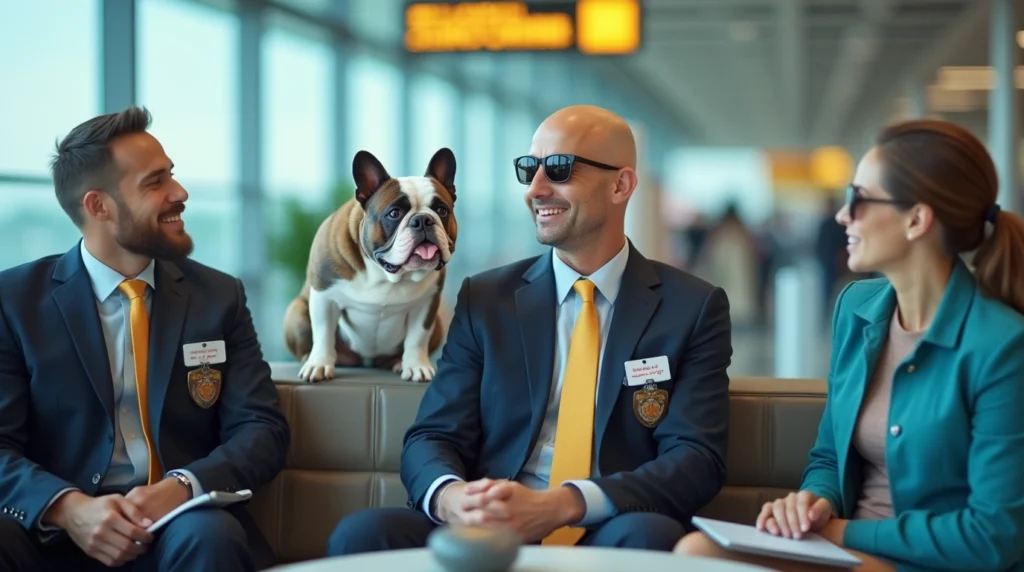
Benefit #1: Cost-Effective Pet Travel Compared to Alternatives
Lower Fee Structure Than Many Competitors
One of the most significant advantages of the Southwest pet fee is its relative affordability compared to many other major carriers. At $95 each way, Southwest offers one of the more competitive pet fees in the industry. While some airlines like Delta may match this fee on certain routes, others charge substantially more:
- American Airlines charges $125 each way
- United Airlines charges $125 each way
- JetBlue charges $125 each way
For a round-trip journey, the difference between Southwest’s $190 total pet fee and the $250 charged by several competitors represents a savings of $60 – enough to cover pet supplies, a new carrier, or other travel necessities.
Frequent Southwest traveler Jessica Martinez notes: “I fly between Chicago and Phoenix about six times a year with my Chihuahua, Peanut. Using Southwest exclusively for these trips saves me about $360 annually on pet fees alone compared to United, which was my previous airline.”
No Hidden Surcharges or Additional Fees
Beyond the base fee comparison, Southwest stands out for its straightforward pricing model. Many airlines add supplemental charges that can significantly increase the cost of pet travel:
- Some carriers charge “peak travel” surcharges during holiday periods
- Others impose additional “handling fees” at certain airports
- Several airlines have higher fees for pets on international segments of domestic itineraries
- Some have route-specific pricing that varies by destination
Southwest maintains a consistent $95 fee regardless of route (within their network), time of year, or airport. This predictability helps pet owners budget more accurately for travel expenses.
Travel blogger Michael Chen, who documents pet-friendly travel options, explains: “What looks like a small difference in base fees can balloon when you factor in the various surcharges other airlines tack on. I’ve seen cases where a $125 pet fee turned into over $200 with various handling and seasonal supplements.”
Value Comparison: Pet Sitting vs. Southwest Pet Fee
When evaluating the Southwest pet fee, many pet owners compare it to the alternative of leaving their pet behind with a sitter or boarding facility. This comparison often reveals the relative value of Southwest’s pet transportation option:
Average pet care costs for a 5-day trip:
- In-home pet sitting: $25-50 per day ($125-250 total)
- Premium boarding facility: $50-75 per day ($250-375 total)
- Luxury pet hotel: $75-100+ per day ($375-500+ total)
By contrast, bringing your pet along on Southwest would cost:
- Round-trip pet fee: $190
- Potential savings: $60-310 compared to premium boarding options
Beyond the financial savings, many pet owners place immeasurable value on keeping their pets with them rather than leaving them behind, making the Southwest pet fee seem even more reasonable.
Pet owner and frequent flyer Robert Thompson shares: “After calculating what I was spending on pet sitting for my cat, I realized that bringing him with me on Southwest was actually cheaper for trips under a week. Plus, I don’t have to worry about him while I’m away, which is priceless.”

Benefit #2: Cabin-Only Policy Ensures Pet Safety and Proximity
Avoiding the Risks of Cargo Transportation
Perhaps the most significant benefit of Southwest’s pet policy isn’t related to the fee itself but to how pets are transported. Southwest only allows pets in the cabin, never in cargo. While this does limit the types and sizes of pets that can travel on the airline, it provides important safety advantages for those that do qualify:
- Elimination of extreme temperature risks associated with cargo holds
- Constant supervision throughout the journey
- Controlled environment with regulated temperature and pressure
- Immediate access in case of emergency
- Reduced stress for many animals due to owner proximity
According to data from the U.S. Department of Transportation, between 2015 and 2021, more than 250 pets died during air transport, with the vast majority of these incidents occurring during cargo transportation. Southwest’s cabin-only policy effectively eliminates this risk category.
Veterinarian Dr. Sarah Williams notes: “From a medical perspective, in-cabin transportation is significantly safer for pets. Stress-related complications, temperature extremes, and handling errors—all common risk factors in cargo transport—are largely eliminated when pets remain with their owners in the cabin.”
Peace of Mind for Anxious Pet Parents
The psychological benefit of keeping pets within sight cannot be overstated for many pet owners. The Southwest pet fee provides access to an experience that offers continuous reassurance:
- Visual confirmation of your pet’s condition throughout the flight
- Ability to provide comfort through your presence and voice
- Immediate awareness of any distress signals
- Opportunity to manage anxiety signs before they escalate
- Control over your pet’s environment
Research published in the Journal of Veterinary Behavior indicates that many pets experience less stress-related hormone elevation when they can maintain visual and olfactory contact with their owners during travel.
Melissa Rodriguez, who regularly flies between Dallas and Los Angeles with her anxiety-prone rescue dog, explains: “The $95 Southwest pet fee is basically my anxiety management fee. Knowing I can check on Oscar throughout the flight and that he can smell and hear me nearby makes the entire experience so much better for both of us. I’ve tried sedatives for him on other airlines when he had to go in cargo, and it was still traumatic.”
Simplified Check-in and Reduced Logistics
Southwest’s cabin-only pet transportation simplifies the travel process considerably compared to cargo shipping:
- Same check-in process as regular passengers (just with pet documentation)
- No separate drop-off or pick-up locations
- Consistent departure and arrival points
- Reduced minimum arrival time requirements
- No specialized handling forms beyond basic pet health verification
For travelers with tight connections or complex itineraries, this streamlined approach can be invaluable. The Southwest pet fee essentially purchases a simpler, more straightforward travel experience with fewer logistical complications.
Travel coordinator James Chen, who arranges pet-friendly travel for corporate clients, notes: “When I’m booking executive travel with pets, I often recommend Southwest specifically because the pet handling process is so much more straightforward. The time saved not dealing with cargo procedures and separate pick-up locations can be substantial, especially at larger airports.”
Benefit #3: Excellent Pet-Friendly Reputation and Customer Experience
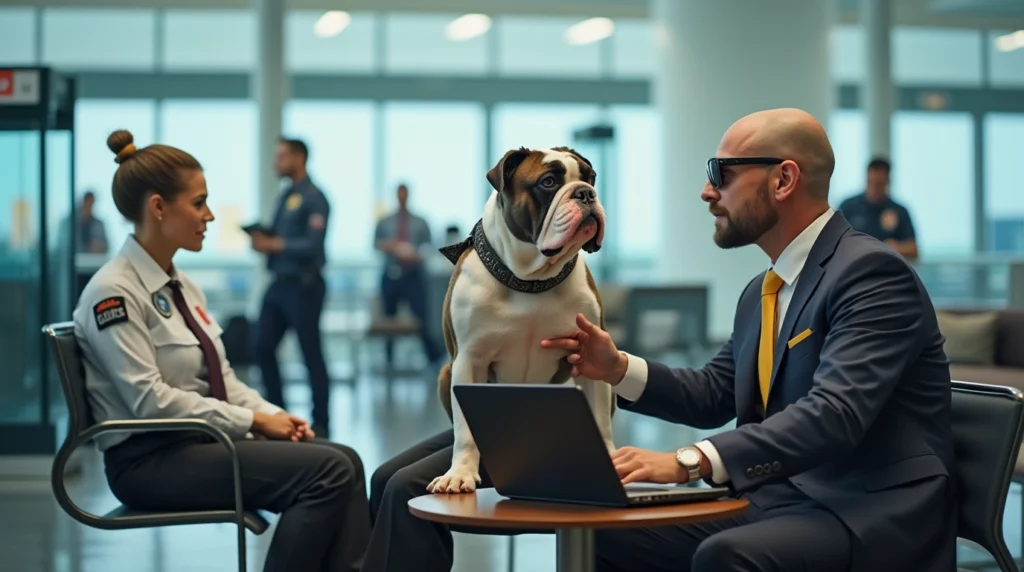
Trained Staff Familiar with Pet Travelers
The Southwest pet fee doesn’t just pay for transportation—it provides access to an airline with a strong reputation for pet-friendly service. Southwest employees receive specific training on pet policies and handling considerations, resulting in:
- Knowledgeable gate agents who understand pet travel requirements
- Flight attendants familiar with in-cabin pet needs and concerns
- Customer service representatives equipped to answer pet-related questions
- Ground staff trained to direct pet owners efficiently through the airport
According to internal Southwest training documents, all customer-facing employees receive at least 30 minutes of dedicated instruction on pet policies and accommodation strategies, with refresher training provided annually.
Sarah Martinez, who has flown with her terrier on multiple airlines, shares: “The difference in how Southwest staff handles pet questions compared to other airlines is noticeable. They don’t have to look up policies or check with supervisors—they know exactly what’s permitted and how to make things easier for pet travelers.”
Community of Pet-Traveling Customers
Southwest has developed a reputation as a pet-friendly airline, creating a virtuous cycle where pet owners recommend the airline to other pet owners. This has cultivated a community aspect that enhances the travel experience:
- Active social media groups sharing Southwest pet travel tips
- Informal support networks at major Southwest hubs
- Higher probability of experienced pet travelers who can offer assistance
- Pet-friendly atmosphere on flights with less judgment from fellow passengers
The #SouthwestPets hashtag on Instagram has over 45,000 posts from travelers sharing their experiences, significantly more engagement than similar tags for other domestic carriers.
Travel blogger Elena Thompson observes: “There’s an unspoken understanding among Southwest travelers that pets are welcome. I’ve noticed far fewer eye rolls or complaints about animals on Southwest flights compared to other airlines I’ve flown. That welcoming attitude makes the experience much more pleasant for pet owners.”
Consistency Across the Network
Another value component of the Southwest pet fee is the consistency of experience across their route network. Unlike airlines that have varying pet policies by aircraft type or destination, Southwest maintains relatively uniform procedures throughout their system:
- Same carrier size requirements across all aircraft types
- Consistent pet fee regardless of route length or destination
- Standardized documentation requirements throughout the network
- Uniform boarding procedures for pet owners
- Reliable availability (subject to the six-pet limit) across routes
This consistency reduces research time and stress when planning multi-stop journeys, as the same rules apply throughout the Southwest network (with the exception of Hawaii flights, which don’t allow pets).
Business traveler Michael Davis, who flies with his cat approximately 20 times per year, notes: “The predictability factor with Southwest is worth every penny of the pet fee. I don’t have to research different rules for different aircraft or routes. Once you know their pet policy, it applies virtually everywhere they fly.”
Cost #1: Carrier Restrictions May Require Additional Purchases
Specific Carrier Requirements Add to Overall Cost
While the Southwest pet fee itself is competitive, meeting the airline’s specific carrier requirements may necessitate additional purchases for first-time travelers:
Southwest requires that pet carriers:
- Must not exceed 18.5″ long x 13.5″ wide x 8.5″ high
- Must be leak-proof and well-ventilated
- Must be able to fit under the seat in front of you
- Must allow the pet to stand up and turn around inside
- Must keep the pet completely contained at all times
- Can be soft-sided or hard-sided (though soft-sided typically fit better)
These specific dimensions are slightly different from some other airlines, meaning that if you’ve previously traveled with a pet on another carrier, your existing carrier might not comply with Southwest’s requirements. New Southwest-compliant carriers typically cost $30-$120 depending on quality and features.
Pet accessory specialist Jennifer Wong explains: “Many pet owners don’t factor in the cost of purchasing a Southwest-specific carrier when budgeting for travel. The dimensions are particular to Southwest’s aircraft configuration, and using a non-compliant carrier risks being denied boarding—an expensive mistake.”
Investment in Comfort Features for Longer Flights
Beyond the basic carrier, Southwest’s in-cabin pet transportation approach often necessitates additional comfort-related purchases, especially for longer flights:
- Absorbent pads for inside the carrier ($10-$20)
- Calming aids like ThunderShirts or pheromone sprays ($25-$50)
- Silent toys or chews that keep pets occupied ($15-$30)
- Specialized travel water dispensers that don’t spill ($10-$25)
- Lightweight blankets or comfort items with familiar scents ($10-$20)
These additional investments, while not directly part of the Southwest pet fee, are practical necessities for many travelers to ensure their pets remain comfortable throughout the journey.
Veterinary technician and frequent flyer Robert Johnson advises: “I tell pet owners to budget at least $50-$100 beyond the airline pet fee for comfort items. A stressed or uncomfortable pet can make the journey miserable for everyone involved, so these aren’t just luxury items—they’re practical necessities.”
Potential Need for Vet Visits and Documentation
Although Southwest doesn’t require health certificates for pets on domestic flights (unlike international travel or cargo shipping), many responsible pet owners seek veterinary clearance before travel, adding to the total cost:
- Pre-travel wellness exam: $50-$75
- Vaccination updates if needed: $20-$45 per vaccine
- Microchip if not already in place: $25-$50
- Travel-specific medications (anxiety, motion sickness): $30-$100
- Documentation fees: $0-$25
While not strictly required by Southwest’s pet policy for domestic travel, these precautionary measures represent hidden costs associated with responsible pet travel that extend beyond the basic Southwest pet fee.
Dr. Maria Garcia, veterinarian and pet travel consultant, recommends: “Even though Southwest doesn’t mandate a health certificate for domestic flights, I strongly advise a pre-travel checkup, especially for first-time flying pets or those with any health concerns. This adds to your total cost but provides important peace of mind.”
Cost #2: Limited Availability and Route Restrictions
Six-Pet Maximum Policy May Necessitate Flexible Plans
One significant limitation of Southwest’s pet policy is the strict cap of six pets per flight. This restriction means that:
- Pet spots are allocated first-come, first-served
- No pre-booking of pet spots is available
- Booking well in advance doesn’t guarantee a pet spot
- Holiday and peak travel times see high competition for limited pet slots
- Popular routes between major cities often fill pet allocations quickly
This uncertainty can lead to additional costs if travelers need to:
- Book alternative flights if the preferred option has reached its pet limit
- Stay additional nights if unable to secure pet space on the intended return flight
- Make last-minute booking changes at potentially higher fares
- Purchase more expensive refundable fares to maintain flexibility
According to Southwest customer service data, during peak holiday periods, approximately 30% of flights reach their maximum pet capacity, creating significant competition for available slots.
Travel agent Sophia Martinez shares: “I always warn clients traveling with pets on Southwest about the six-pet limit. For holiday travel especially, I recommend arriving extremely early to check in, as I’ve had clients get bumped to later flights because they were the seventh person with a pet—despite having confirmed reservations.”
Geographic Limitations on Southwest’s Network
The Southwest pet fee only provides value on routes where the airline operates, and several notable limitations exist:
- No international pet travel on Southwest (including Mexico and Caribbean)
- No pet service to/from Hawaii
- Limited service to smaller regional airports
- No interline agreements with other carriers for complex itineraries with pets
These restrictions can lead to substantial additional costs when travelers need to:
- Book separate tickets on different airlines for portions of their journey
- Pay for pet accommodation during layovers between non-connecting flights
- Arrange ground transportation alternatives for route segments Southwest doesn’t serve
- Navigate different pet policies and fees across multiple carriers
For travelers to Hawaii specifically, the inability to bring pets on Southwest flights represents a significant limitation, requiring either leaving pets behind or choosing another airline at potentially higher cost.
James Davis, who frequently travels between mainland U.S. and Hawaii, notes: “Southwest’s great fares to Hawaii become irrelevant when traveling with my dog. I end up paying $200+ more per round trip using carriers that accept pets on Hawaiian routes, plus their pet fees are often higher than Southwest’s would be.”
Aircraft Configuration Limitations
Southwest’s all-Boeing 737 fleet creates some consistency advantages but also imposes limitations that can affect the total cost of pet travel:
- Limited under-seat space compared to some wider-bodied aircraft
- No premium cabin options with additional pet space
- No specialized pet accommodation areas available for purchase
- Same carrier size restrictions across all flights regardless of aircraft variant
- Limited space particularly in bulkhead and exit rows (where pets aren’t permitted anyway)
These configuration constraints sometimes force travelers to:
- Purchase more expensive, specialized ultra-compact carriers
- Pay for veterinary anti-anxiety solutions for pets that struggle in confined spaces
- Book additional seats to create more personal space around the pet carrier
- Choose alternative airlines with different aircraft types for certain trips
Pet travel consultant Robert Thompson explains: “Southwest’s consistent fleet is a double-edged sword for pet travelers. While the predictable configuration makes planning easier, the relatively tight under-seat dimensions can be challenging for medium-sized pets that might have more space on other carriers’ aircraft, particularly in premium cabins.”
Cost #3: Additional Considerations Beyond the Base Pet Fee
Impact on Boarding Position and Seating Options
While not a direct monetary cost, the Southwest pet fee comes with certain practical limitations that affect the overall travel experience:
- Pet carriers must remain under the seat in front of you during takeoff and landing
- This eliminates exit row seating as an option (reducing legroom opportunities)
- Bulkhead seating isn’t compatible with pet travel (no under-seat storage)
- Window seats offer less under-seat space on some aircraft configurations
- Pets count against the passenger’s carry-on allowance
For passengers accustomed to Southwest’s open seating policy, traveling with a pet effectively restricts available seating options. This can be especially impactful during full flights when seating choices are already limited.
Frequent Southwest flyer Elena Sanchez notes: “I typically pay for Early Bird Check-In to get a good boarding position, but when traveling with my cat, my seating options are much more limited despite boarding early. I essentially pay for priority boarding but can’t take full advantage of it because of the pet carrier restrictions.”
Pet Behavior Considerations and Hidden Costs
Beyond the Southwest pet fee itself, pet owners often encounter additional stress and sometimes costs related to pet behavior during travel:
- Anxiety management for pets unaccustomed to travel
- Potential for disruption if pets become vocal during flight
- Extra vigilance required throughout the journey
- Limited ability to use restrooms during longer flights without pet supervision
- Possible cleaning fees if accidents occur despite precautions
These factors don’t appear on the initial receipt but represent real costs in terms of comfort, convenience, and occasionally unexpected fees.
Veterinary behaviorist Dr. Thomas Wilson explains: “The psychological cost of managing a pet during air travel is substantial. Many owners report high stress levels related to worrying about their pet’s comfort and behavior during flights. This stress, while not monetarily quantifiable, is definitely part of the ‘cost’ of bringing a pet onboard.”
Added Time Requirements Throughout the Journey
Pet travel on Southwest requires additional time investments that represent an opportunity cost for travelers:
- Earlier arrival at the airport (recommended 30+ minutes earlier than standard)
- Additional security screening procedures
- Pre-flight pet exercise requirements
- Limited ability to use airport lounges or amenities
- Possible delays during boarding and deplaning
For business travelers especially, these time costs can be significant when multiplied across multiple trips. Some travelers report adding 1-2 hours to their total travel time when bringing pets compared to traveling alone.
Business consultant Maria Thompson, who flies Southwest approximately 40 times annually, shares: “When I travel with my dog, I budget an extra hour at departure and 30 minutes upon arrival compared to my solo trips. Over a year of travel, that’s easily 20-30 hours of additional time spent purely because I’m traveling with my pet—not counted in the pet fee but definitely a cost to consider.”
Real Traveler Experiences with Southwest’s Pet Fee and Service
Success Stories and Positive Experiences
Many travelers find significant value in Southwest’s pet transportation options despite the associated costs:
Michael C., Dallas to Chicago regular traveler: “I’ve flown with my French Bulldog on Southwest at least 20 times in the past three years. The consistent $95 fee is reasonable considering the alternative of boarding him at $65 per day. The staff consistently makes the process easy, and having him under the seat in front of me rather than in cargo gives me tremendous peace of mind, especially given his breed’s respiratory sensitivities.”
Jennifer T., Phoenix-based consultant: “As someone who travels weekly for work, sometimes bringing my cat along is the only way we maintain our bond. Southwest’s straightforward pet policy makes this possible without the extreme stress of cargo transportation or navigating complex pet rules that change by aircraft or route. The $95 fee is essentially my ‘sanity tax’ for not having to worry about her well-being while I’m traveling.”
The Rodriguez Family, vacation travelers: “We fly Southwest exclusively for family vacations because their pet fee is predictable and their staff is consistently pet-friendly. Our Yorkie has been to 14 states with us over the past four years. The peace of mind knowing he’s safely under the seat rather than in cargo is worth every penny of the pet fee.”
Challenges and Negative Experiences
Not all travelers have had positive experiences with Southwest’s pet transportation system:
David M., irregular traveler: “I was unpleasantly surprised when I arrived at the airport and discovered I was the seventh person with a pet on my flight. Despite having paid the $95 pet fee in advance, I couldn’t board with my dog. I had to rebook on a later flight, causing me to miss an important meeting. The lack of ability to reserve a guaranteed pet spot is a serious flaw in their system.”
Sarah J., frequent flyer: “The Southwest pet fee seems reasonable until you factor in all the additional costs. I had to purchase a Southwest-specific carrier because my existing one was half an inch too tall. Between that, comfort items, and a pre-travel vet check, my actual pet travel costs were closer to $300 than the advertised $95.”
Thomas K., multi-destination traveler: “Southwest’s limited route network becomes very apparent when traveling with pets. A journey that would be simple with just a human passenger becomes complex and significantly more expensive when portions require booking on other airlines with different pet policies and fees. This hidden cost of Southwest’s limited network isn’t obvious until you’re deep into planning.”
FAQ Section: Southwest Pet Fee and Travel Policies
How strict is Southwest about pet carrier dimensions?
Southwest is generally quite strict about their carrier dimension requirements (18.5″ x 13.5″ x 8.5″). Gate agents routinely check carrier sizes, and passengers with non-compliant carriers may be denied boarding. The key measurement is typically height, as the 8.5″ restriction ensures the carrier fits under the seat without being compressed.
Some travelers report minor flexibility (within 0.5″) if the carrier is soft-sided and can be slightly compressed without causing discomfort to the pet. However, this should not be relied upon, as enforcement varies by agent and airport. Your best approach is to purchase a carrier specifically marketed as Southwest-compliant or carefully measure any existing carrier before travel.
Southwest’s website specifically states that pets must be able to stand up and turn around comfortably within the carrier, so even if a carrier technically meets the dimension requirements, staff may still deny boarding if the pet appears cramped or uncomfortable.
Do Southwest’s pet spots really fill up, and how can I ensure my pet gets on my flight?
Yes, Southwest’s six-pet limit per flight is strictly enforced, and popular routes (especially during holidays) frequently reach this capacity. Since Southwest doesn’t offer pre-booking for pet spots, they are allocated strictly first-come, first-served at the airport on the day of travel.
To maximize your chances of securing a pet spot:
- Check in online exactly 24 hours before departure to get the earliest possible boarding position
- Arrive at the airport at least 2 hours before departure for domestic flights
- Proceed immediately to the check-in counter to register your pet
- Consider booking less popular flight times (early morning or late evening)
- Be prepared with knowledge of alternative flights should your first choice be full
Some regular pet travelers report that calling Southwest Customer Service 24-48 hours before the flight and asking how many pets are currently registered for your flight can provide some guidance, though this information isn’t guaranteed to be accurate as it changes constantly.
What happens if my pet makes noise during the Southwest flight?
Unlike some airlines that have explicit policies about disruptive pets, Southwest takes a more case-by-case approach. Generally, occasional mild vocalizations are tolerated, but sustained barking, meowing, or other disruptive sounds may be addressed by flight attendants.
If your pet becomes disruptive:
- Flight attendants will typically first ask if you can calm your pet
- They may suggest moving to a different seat if available
- In extreme cases of disruption, you might be asked to store the carrier in a lavatory temporarily
- Very rarely, serious disruptions could result in being met by customer service upon landing
To minimize the risk of noise issues:
- Exercise your pet thoroughly before the flight
- Consider vet-approved calming supplements or medications
- Use familiar bedding and toys in the carrier
- Avoid feeding immediately before the flight (small treats are fine)
- Cover part of the carrier with a light blanket to reduce visual stimulation
Most Southwest flight attendants report being understanding of occasional pet noises, recognizing that some vocalization is normal during the stress of travel.
How does Southwest’s pet policy work for connecting flights?
When flying Southwest with a pet on an itinerary with connections:
- The $95 pet fee applies to each leg of your journey, meaning a round-trip with a connection each way would incur $380 in pet fees (four individual flight segments)
- You must re-check your pet at the ticket counter during each connection
- The six-pet limit applies separately to each flight segment
- All connecting flights must be booked on the same reservation for pets to be accepted
- Minimum connection times are recommended to be at least 60 minutes to allow for re-checking
Important considerations for connections with pets:
- Each flight segment counts independently toward the six-pet limit
- Being confirmed on your first flight doesn’t guarantee acceptance on connections
- In rare cases, you might be accommodated on your first flight but unable to board a connection if it has reached its pet limit
- Southwest does not provide special assistance for connecting passengers with pets
If you have a tight connection, inform the flight attendants on your arriving flight that you’re traveling with a pet and need to re-check at the connection point. They can sometimes help expedite the process or provide guidance to the appropriate check-in location.
Does Southwest offer any discounts or programs for frequent pet travelers?
Currently, Southwest does not offer any formal discount programs specifically for pet travel. The $95 pet fee remains consistent regardless of how frequently you travel with your pet. Unlike some competitors that have created pet-specific loyalty programs (like JetBlue’s JetPaws), Southwest includes no:
- Reduced fees for frequent pet travelers
- Pet loyalty point accumulation
- Special boarding privileges for pets
- Pet-specific amenities or welcome kits
However, some indirect benefits do exist for Southwest Rapid Rewards members:
- Points earned on your ticket can offset the cost of future travel (though the pet fee must still be paid separately)
- A-List and A-List Preferred status provides earlier boarding, increasing your chances of preferred seating while traveling with a pet
- Companion Pass benefits allow a human companion to fly free, potentially offsetting overall travel costs even with the pet fee
Some frequent travelers report occasional informal courtesies extended to regular pet travelers recognized by staff, but these are not guaranteed or part of any official policy.
Conclusion: Is Southwest’s Pet Fee Worth It For You?
The Southwest pet fee of $95 each way represents a straightforward cost for a service with significant variations in value depending on individual circumstances and priorities. For many travelers, the benefits—including competitive pricing compared to alternatives, the safety and peace of mind of cabin-only transport, and Southwest’s pet-friendly reputation—outweigh the costs and limitations. Those benefits make Southwest a preferred choice for regular pet travelers with flexible schedules who primarily fly domestic routes served by the airline.
However, the associated costs beyond the base fee—including carrier-specific requirements, the uncertainty of the six-pet limit, and geographic limitations—can make Southwest’s pet service less ideal for certain travelers. Those with inflexible schedules, travelers to destinations outside Southwest’s network, and owners of pets that struggle with the specific carrier dimensions might find better value with alternative airlines despite potentially higher base pet fees.
When evaluating whether Southwest’s pet transportation service provides good value for your specific needs, consider:
- How frequently you travel with your pet
- Your typical routes and whether they’re well-served by Southwest
- Your schedule flexibility if pet spots are unavailable
- How your pet handles confinement in carrier dimensions specific to Southwest
- The temperament and travel adaptability of your specific pet
- The total cost including the pet fee and all associated purchases and preparations
By weighing these factors against the $95 Southwest pet fee, you can make an informed decision about whether Southwest offers the right combination of value, convenience, and pet-friendly service for your travel needs.
Have you traveled with your pet on Southwest or other airlines? Share your experience in the comments below to help other pet owners navigate their travel decisions!

